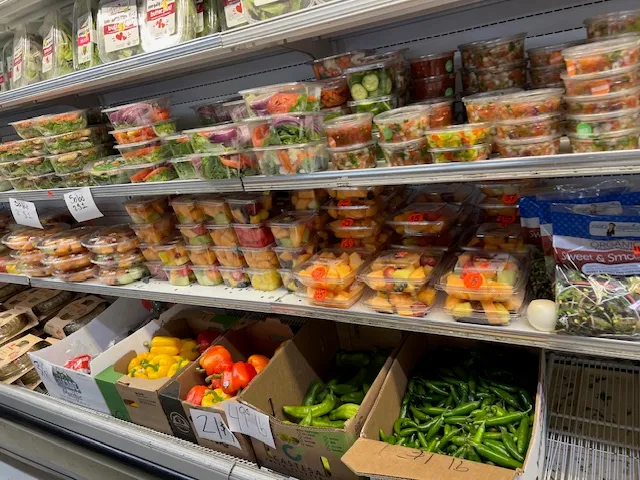Table of Contents
Baked goods are cherished treats and staples in diets worldwide, celebrated for their comforting flavors, textures, and versatility. From fluffy breads and savory pies to indulgent cakes and cookies, baked goods bring joy to meals, mark special occasions, and satisfy cravings.
Benefits
- Energy Source: Many baked goods are rich in carbohydrates, providing a quick source of energy.
- Convenience: They are often easy to transport, store, and serve, making them ideal for snacks and gatherings.
- Cultural Significance: Baked goods often reflect regional traditions and flavors, connecting people to their heritage.
- Creativity: Home-baking allows for endless experimentation with flavors, ingredients, and dietary preferences.
Bad Effects
Despite their appeal, excessive consumption of certain baked goods can lead to negative health impacts:
- High Sugar Content: Sweet treats like pastries and cookies may contribute to weight gain and blood sugar spikes when eaten in excess.
- Refined Flour: Many baked goods use refined grains, which lack fiber and essential nutrients found in whole grains.
- Added Fats: Some products are high in unhealthy fats, including trans fats, which can affect heart health.
- Calorie-Dense: Overindulgence may lead to excessive calorie intake, affecting weight management and overall health.
List of baked goods, including their varieties, uses, origins, nutrition, and health considerations. The table focuses on common and globally recognized items, balancing indulgence with nutritional insights:
Baked Goods Table
| Name | Description | Uses | Origin | Nutrition (per 100g) | Health Benefits/Considerations |
|---|---|---|---|---|---|
| Sourdough Bread | Fermented bread with tangy flavor; chewy crust. | Sandwiches, toast. | Ancient Egypt | Calories: 230, Protein: 8g, Fiber: 3g. | Probiotic-rich, easier digestion due to fermentation. |
| Baguette | Long, thin French bread with crispy crust. | Dipping, sandwiches. | France | Calories: 290, Carbs: 58g, Protein: 11g. | Low fat, but high in refined carbs. |
| Croissant | Flaky, buttery layered pastry. | Breakfast, desserts. | Austria/France | Calories: 406, Fat: 21g, Carbs: 45g. | Energy-dense; high in saturated fats. |
| Chocolate Chip Cookie | Sweet, soft cookie with chocolate chunks. | Snacks, desserts. | United States | Calories: 488, Sugar: 28g, Fat: 24g. | Quick energy; high in sugar. |
| Cheesecake | Creamy dessert with a crumbly crust (graham or biscuit). | Desserts, celebrations. | Ancient Greece | Calories: 321, Protein: 6g, Sugar: 25g. | Calcium from cream cheese; high in calories. |
| Whole Wheat Bread | Nutty, dense bread made with whole grains. | Sandwiches, toast. | Global (modern adaptation) | Calories: 247, Fiber: 7g, Protein: 13g. | High fiber for digestion; sustains energy. |
| Bagel | Dense, ring-shaped bread; boiled then baked. | Breakfast sandwiches. | Poland | Calories: 250, Carbs: 49g, Protein: 10g. | Low fat; pair with protein for balance. |
| Pita Bread | Soft, pocketed flatbread. | Wraps, dips. | Middle East | Calories: 275, Protein: 9g, Fiber: 2g. | Versatile; low sodium. |
| Apple Pie | Sweet pastry filled with spiced apples. | Desserts, holidays. | England | Calories: 265, Sugar: 18g, Fiber: 2g. | Vitamin C from apples; high in added sugar. |
| Danish Pastry | Layered, buttery pastry with fruit or cream filling. | Breakfast, snacks. | Denmark | Calories: 330, Fat: 16g, Sugar: 20g. | Contains fruit antioxidants; calorie-dense. |
| Muffin (Blueberry) | Sweet, cake-like quick bread with blueberries. | Breakfast, snacks. | United States | Calories: 265, Sugar: 22g, Fiber: 1.5g. | Antioxidants from berries; often high in sugar. |
| Pretzel | Twisted, salted dough; soft or crunchy. | Snacks, street food. | Germany | Calories: 380, Carbs: 80g, Sodium: 1,500mg. | Low fat; high sodium. |
| Brownie | Dense, chocolatey baked square. | Desserts. | United States | Calories: 466, Sugar: 40g, Fat: 25g. | Mood-boosting cocoa; high in sugar/fat. |
| Éclair | Elongated pastry filled with cream and topped with chocolate. | Desserts. | France | Calories: 240, Sugar: 15g, Protein: 4g. | Source of calcium; indulgent treat. |
| Naan | Soft, leavened flatbread cooked in a tandoor. | Indian cuisine, dips. | South Asia | Calories: 310, Carbs: 46g, Protein: 9g. | Often fortified with iron; pair with veggies. |
| Pound Cake | Dense, buttery cake with equal parts flour, butter, sugar, eggs. | Desserts, tea time. | Northern Europe | Calories: 430, Sugar: 35g, Fat: 22g. | Energy-rich; best in moderation. |
| Oatmeal Cookie | Chewy cookie made with oats, raisins, or chocolate. | Snacks. | Scotland | Calories: 420, Fiber: 3g, Sugar: 25g. | Fiber from oats; still sugary. |
| Tiramisu | Layered dessert with coffee-soaked ladyfingers and mascarpone. | Desserts. | Italy | Calories: 350, Protein: 6g, Sugar: 28g. | Coffee antioxidants; high in saturated fat. |
| Cornbread | Sweet or savory bread made with cornmeal. | Side dish, Southern cuisine. | Americas | Calories: 330, Fiber: 3g, Iron: 2mg. | Gluten-free option (if no wheat); moderate fiber. |
| Macaron | Delicate meringue-based sandwich cookie with filling. | Desserts, tea parties. | France | Calories: 360, Sugar: 30g, Fat: 15g. | Low protein; aesthetic indulgence. |
Key Notes:
- Healthier Choices:
- Whole Wheat Bread: High in fiber.
- Sourdough: Easier to digest.
- Pita Bread: Low sodium, versatile.
- Indulgent Treats:
- Croissants, Brownies, and Cheesecake are high in sugar/fat; enjoy in moderation.
- Cultural Staples:
- Naan (India), Baguette (France), Pretzel (Germany).
- Nutrition Tips:
- Pair baked goods with protein (e.g., nut butter on toast) or fiber (fruit with muffins) to balance blood sugar.
Enjoying baked goods in moderation and opting for healthier alternatives, such as whole grain breads or lower-sugar recipes, can allow you to savor their benefits while minimizing negative effects.









